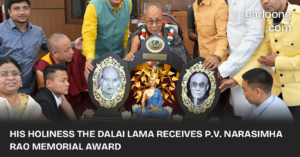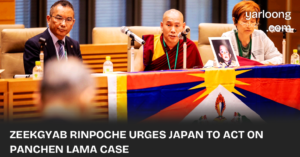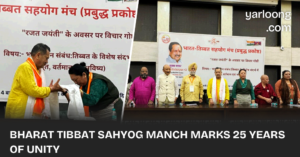In a recent opinion piece by Claude Arpi for First Post, the story of Rahul Sankrityayan, a revered Indian scholar, and his connection to Tibet sheds light on the historical ties between India and Tibet, challenging China’s current narrative.
As China announces a significant increase in its defense budget, the focus shifts not only to the tensions in regions like Taiwan and the South China Sea but also to the long-standing boundary issues with India. Arpi suggests that Delhi might need to adopt unconventional strategies, like “Historical Warfare,” to address these concerns effectively.
Rahul Sankrityayan, born in Uttar Pradesh in 1893, was an extraordinary figure who mastered over 34 languages and spent 45 years traveling across Asia and Europe. His explorations led him to Tibet, where he made four significant journeys, contributing to the understanding of the deep cultural and historical connections between India and Tibet.
Despite being born into a Hindu Brahmin family, Sankrityayan’s quest for knowledge saw him embracing Buddhism and actively participating in India‘s freedom movement and the peasant movement, according to First Post.
ALSO READ: Increased Surveillance in Chengdu’s Tibetan Shops on Tibetan Uprising
During his travels in Tibet, Sankrityayan collected 1,619 manuscripts and thankha paintings, which he brought back to India, demonstrating the rich scholarly exchanges between the two regions. He also formed a close relationship with Gendun Choepel, a renowned Tibetan scholar, further highlighting the intellectual and cultural ties.
Arpi emphasizes the importance of acknowledging these historical linkages in the context of current Sino-Indian relations. By celebrating figures like Sankrityayan and the shared heritage of India and Tibet, there’s potential to alter the narrative around the border disputes with China.
The article in First Post not only honors the legacy of these scholars but also calls for a revival of the rich historical connections between India and Tibet as a means to challenge Beijing’s claims and foster a deeper understanding of the region’s history.
This approach, Arpi argues, could provide a fresh perspective on the conflict with China and reinforce the idea that Tibet has always been, geographically and historically, closer to India than to China. The story of Rahul Sankrityayan and his contributions is a reminder of the profound bonds that exist beyond contemporary political narratives, offering insight and inspiration for future generations.






